2019 | Triennale Milano
The Room of Change at the 2019 Milan Triennale
Dataviz, Data Art, and Exhibition
Broken Nature: Design Takes on Human Survival focused on the fraught relationship between humanity and nature, painting a picture of the planet at a critical juncture. On commission, Accurat created the exhibition's opening piece: a data–driven installation that exemplified faith in the synergy between art and science to illuminate paths forward.

Brief
The XXII International Exhibition of La Triennale di Milano was only the second after a 20–year hiatus. Curated by Paola Antonelli (also of MoMA), 2019's showcase of over 100 art, design, and science projects representing 40 countries was an especially ambitious production, preceded by a series of events that previewed the exhibition. “The meetings addressed ideas including how to accessibly present complex data,” the The New York Times↗ noted in a write–up.
Having previously worked with Accurat for MoMA’s 2017 blockbuster show Items: Is Fashion Modern?,↗ Antonelli once again turned to us to dream up, design, and build a dataviz artwork that encompassed the sweeping scope of her exhibition. We set out to draw a timeline that traced human interactions—with other people, with ideologies, with science, nature, etc.—to show incremental effects on the environment.
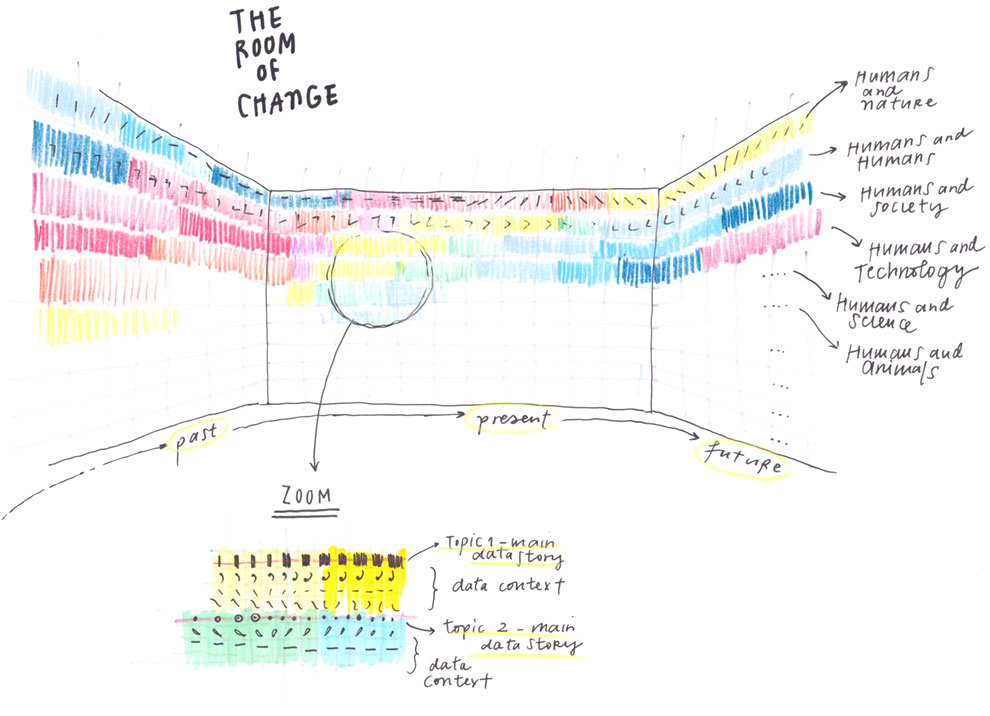
Process
Stationed at the entrance of Broken Nature, our contribution would foreground the entire experience for visitors. It would also complement two large, freestanding screens projecting NASA photography of coastline–shifting changes to the environment, clocked over the course of 20 years. This type of imagery, which shows environmental degradation on a geological scale, is the type that most often accompanies reporting on climate change. With our dataviz, we wanted to provide contrast to the grand–scale of the projections with a work that brought the crisis “down to earth” in a capacity that people could understand and identify with.

To divide and conquer the challenge of charting human history from 1000 B.C. to 2400 A.D., we narrowed our focus to eight broad subject areas. We then broke down these categories further, into more tangible (and measurable) phenomena or events. Stacking these histories, we assembled the shell of a grid with time on the X-axis, flowing from left to right.
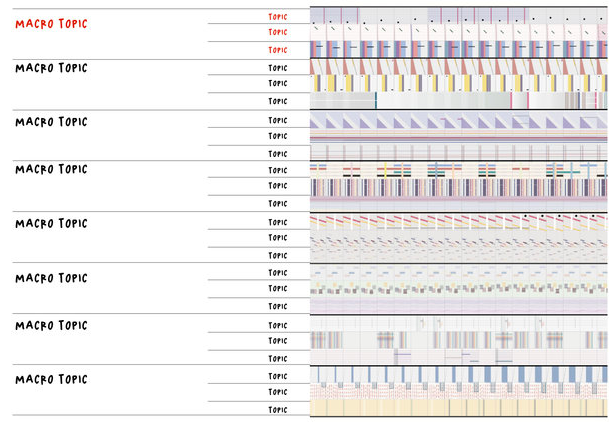
Within each "Macro Topic," we focused on one geo–specific issue and two global subjects. For instance, under the umbrella of "Nature," we traced the disappearance of the Aral Sea in the Middle East, as well as humans’ impact on the environment and the effects of climate change. A section covering "Happiness" illustrated cases over time of depression in Uganda, and tracked worldwide consumption rates of tobacco and alcohol.
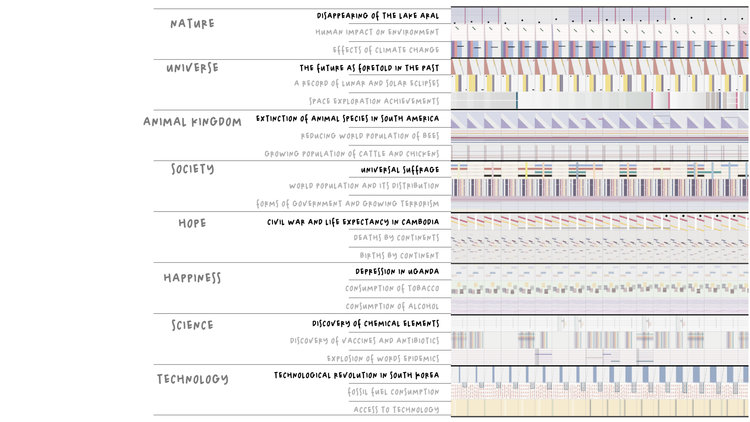
Solution
The Room of Change was unveiled at the opening of Broken Nature on March 1, 2019. The entire installation comprised a 100–foot long data visualization "tapestry," the NASA projection screens, and a pedestal positioned at the center of the room. The pedestal–portion contained a legend for the artwork and functioned to give visitors a privileged view of the full experience, à la an educational plaque perched on the precipice of a scenic overlook.

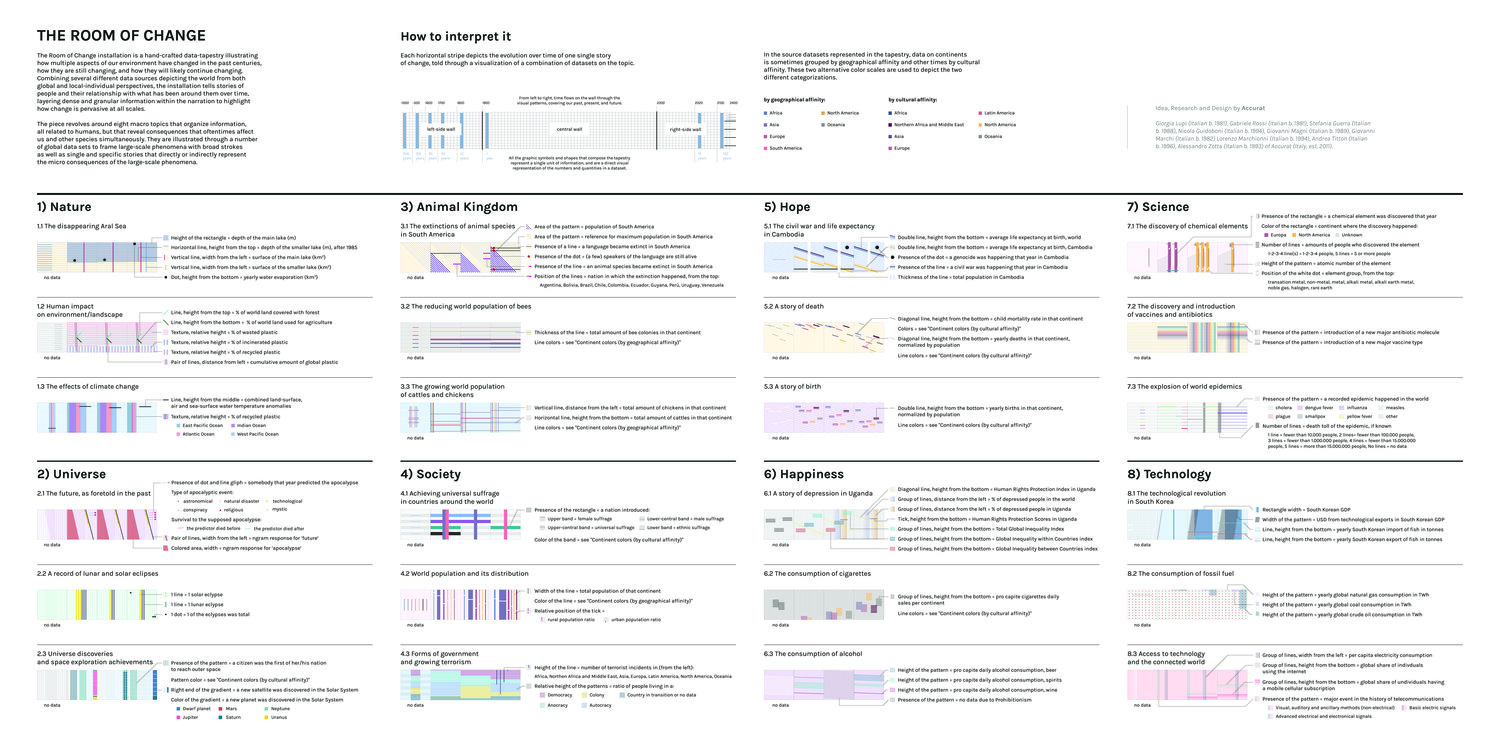
Upon entering, visitors might not have registered that the muted shapes, lines, and patterns flanking the NASA imagery were representations of data—much less that they covered the history of the Anthropocene age. Room of Change essentially takes the form of wallpaper to gently immerse viewers into the worldview of Broken Nature. The placid intricacy of the design beckons exploration.
Read like lines of a book, from left to right, the data tapestry covers eight distinct chapters of human interactions. But observed vertically, the dataviz shows the interplay among interconnected forces in specific years. To repair the "broken nature" of one relationship, it suggests, us humans must examine our interactions with everything that we touch and that touches us. The work prompts contemplation of a lofty challenge and primes visitors to view the works that lay ahead in the exhibition as possible solutions.
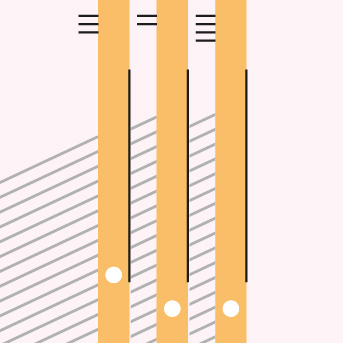
This dataviz portrays the discovery of chemical elements.
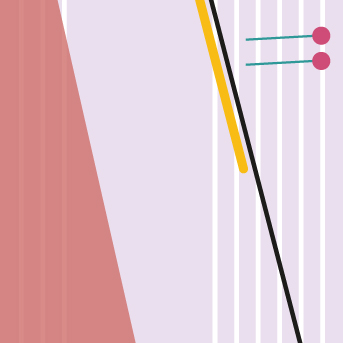
Predictions of apocalypses.

The explosion of epidemics.
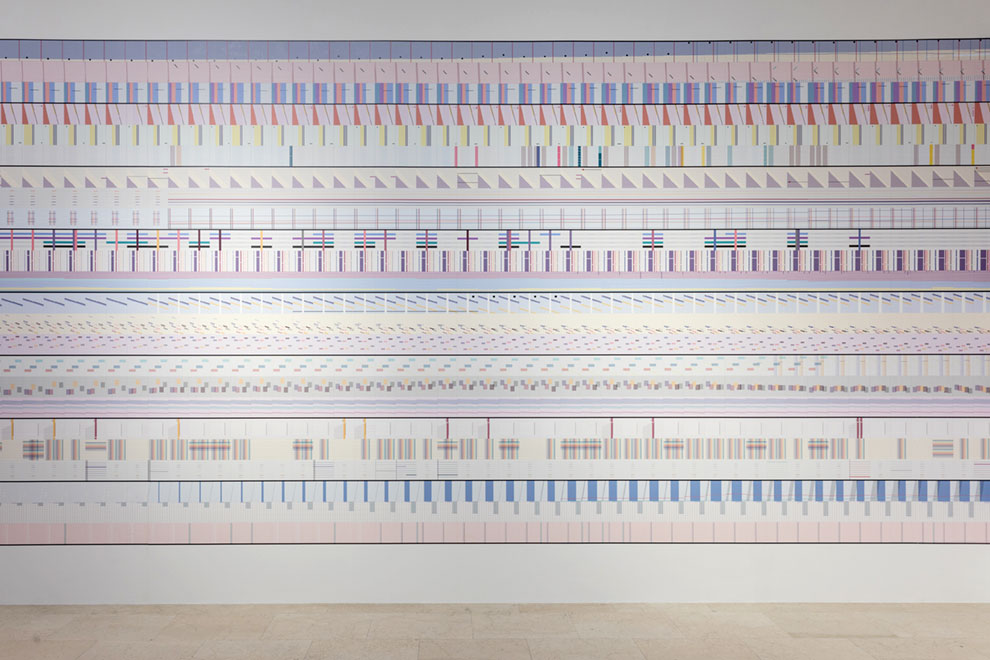
"This elegant visual formalization manifests the urgency needed to interpret and organize purposefully the critical mass of big data and ‘inconvenient facts and truths’, as Antonelli’s wall label describes them, which currently flood our infosphere."
Frieze magazine, 2019
Frieze magazine, 2019
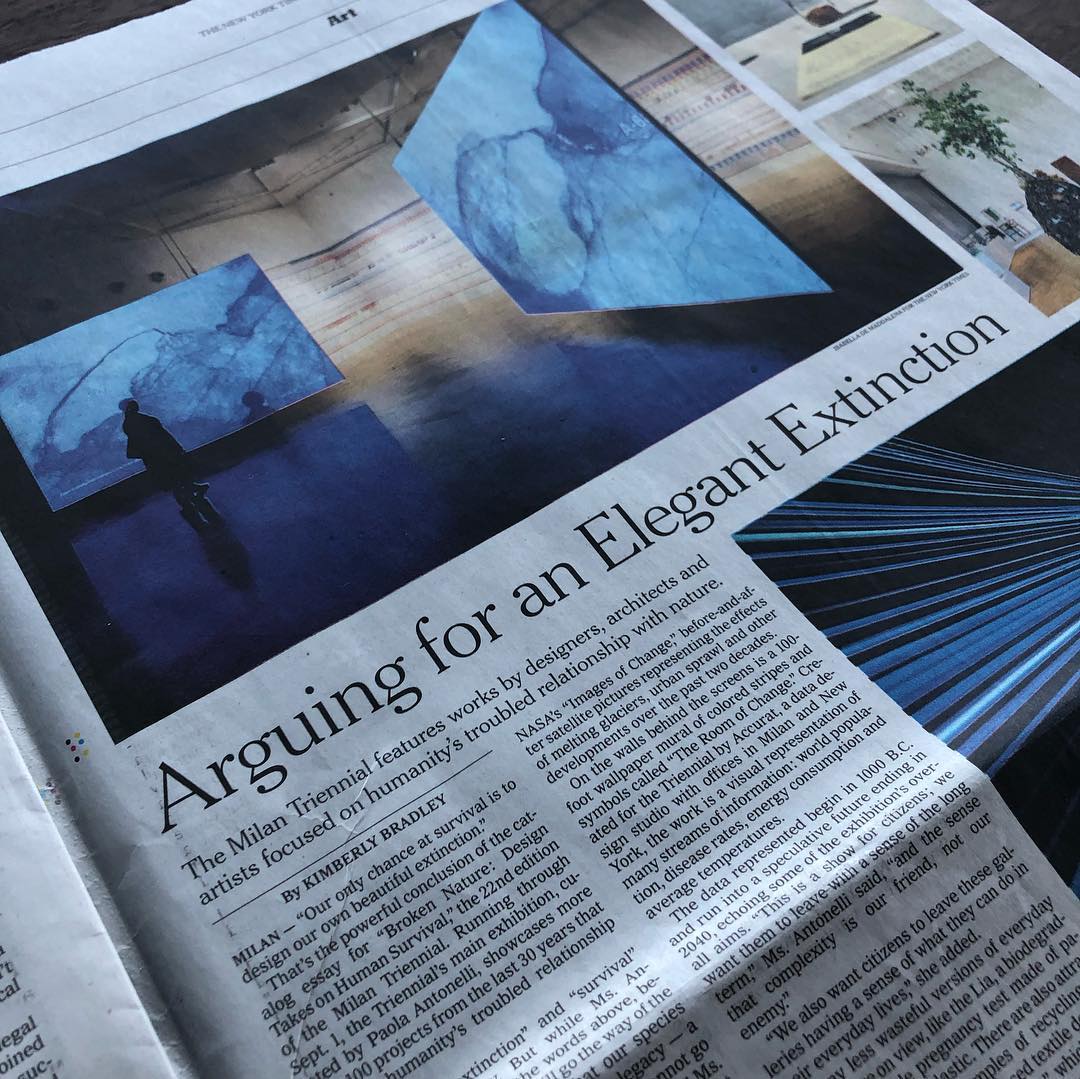
"The Room of Change" in the New York Times.
Results
The Room of Change was featured in reporting on Broken Nature in both English and Italian language print and digital outlets including Cool Hunting, Design Boom, Frieze, Elle Decor, Corriere della Serra and Il Post. Our work was featured prominently in the New York Times' write-up of the Triennale: “Cerebral though it is, the exhibition hits hard. Human impact on the planet is hammered home in the opening gallery,” the journalist wrote. The Room of Change was also one of several pieces chosen by Triennale organizers to be featured in a blog post and video series highlighting the production of works in the show.
Team
Giorgia Lupi
Gabriele Rossi
Nicola Guidoboni
Lorenzo Marchionni
Stefania Guerra
Giovanni Magni
Giovanni Marchi
Andrea Titton
Alessandro Zotta
Press
Services
Dataviz
Data Art
Exhibition
Dataviz, Experience, WebApp, and Mobile App Design